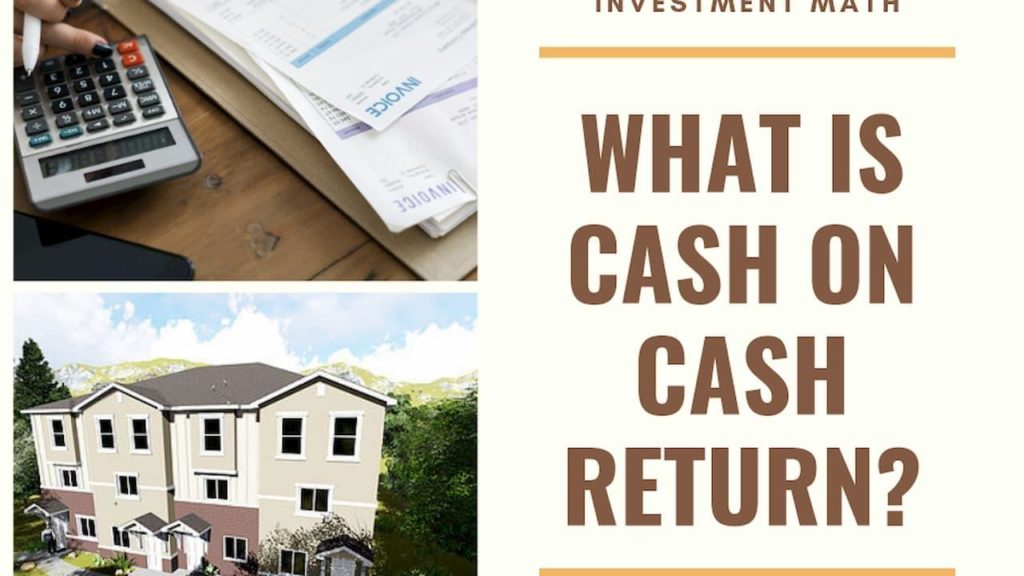
In this article:
- What is Cash on Cash Return?
- [Cash on Cash Return Equation]
- How Do I Determine Annual Pre-Tax Cash Flow?
- How Do I Determine Actual Cash Invested?
- Why Do We Use Cash on Cash Return?
A solid understanding of Cash on Cash Return and its place in investment decisions is crucial if you’re wanting to be a sophisticated investor.
Not only will you have to learn what it represents and what the equation is… you’ll also need to understand how it fits in relation to other key factors of decision making: (ROI, Cap Rate, Overall Return, etc.)
What is Cash on Cash Return “CCR?
CCR is a quick way to determine an investment’s cash flow—and with that cash flow, it more specifically produces a % rate that measures pre-tax cash flow in relation to the total money invested to acquire the asset. Simply put it is the physical cash you have in hand after 12 months, divided by the physical cash invested.

The Cash on Cash Return Equation:
CCR = Annual Pre Tax Cash Flow / Actual Cash Invested x 100%
Not bad, huh? On the surface, it may seem so. However; determining pre-tax cash flow and actual cash invested is where things can get difficult…
How Do I Determine Annual Pre-Tax Cash Flow?
Annual Pre-Tax Cash Flow = Gross Scheduled Rent + Other Income – Vacancy – Operating Expenses – Annual Debt Service
Using a BiggerPockets article “How to Calculate CCR” as a guide; let’s break down the equation:
Gross Scheduled Rent = Properties gross rents, multiplied by 12. “This reflects the maximum amount of income you can expect to receive from a property.”
Other Income = “Think about all of the other earning opportunities the property may present.” Think media fees, pet fees, paid parking spaces, additional utility fees. These miscellaneous fees fall under “other income.”
Vacancy = Use actual vacancy if you’ve had the property for a while and are calculating performance. If not, “potential vacancy” can be calculated by calling up property management firms in the area or asking a real estate agent in the area to run a quick analysis. “Whatever that rate is, I’d go ahead and add 2%. This will help create a small buffer as you learn the ins and outs of the market and what tenants expect a rental unit to look like. For example, if a unit sat unrented on the market for 45 days, then the vacancy rate is 12.33% (45/365). Go ahead and round up to 14% for your projected vacancy rate.”
Operating Expenses = “Operating expenses will range from insurance, taxes, maintenance, HOA and bank fees, property management, and repairs. Operating expenses do not include debt service (principal and interest), nor do they include depreciation or amortization.”
Annual Debt Service = Not including taxes and insurance, consider this your monthly payment to cover both principal and interest related to the loan.
How Do I Determine Actual Cash Invested?
Actual Cash Invested = Down Payment + Closing Costs + Pre-Rental Improvements/Repairs
Down Payment = Total cost paid to the lender to obtain the asset.
Closing Costs = Also simple, add up your net closing costs from the purchase of the property. “To do this, add up all of the costs you paid (not including your down payment) and then subtract from that any seller or lender credits given to you.”
Pre-Rental Improvements/Repairs = Typically we want to calculate CCR to compare the return to the cash we have actually invested into the property, so a focus on pre-rental improvements include any out-of-pocket fix prior to renting the units out.
Why Do We Use Cash on Cash Return?
One of the reasons why CCR is so crucial to a real estate investor is its ability to calculate the percentage return in an investment. By following the net cash flow throughout the year without taking into account appreciation, we’re able to see the return on capital invested by only considering returns driven by the property’s net cash flow.
“Because the cash-on-cash return is only looking at the net cash flow and comparing it to the actual amount of cash invested, it’s a great indicator for the effect of leverage. Using leverage will decrease your cash-on-cash return, which makes the metric a good way to measure different levels of financing.” – BiggerPockets
Hope that clarifies a few things for you. If you still have questions about interpreting cash on cash return (ie. while looking through our proformas) let us know. We’d love to walk through things with you: fig.us/consult
